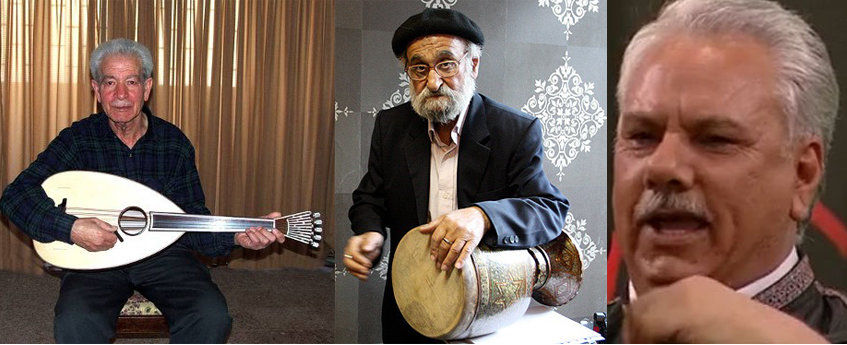Iranian artists hailed as Living Human Treasures

TEHRAN –(Iranart)- Three celebrated Iranian artists in music have been honored with the title of Living Human Treasures on the National Intangible Cultural Heritage list.
Ebrahim Qanbari-Mehr, a pioneer in making and restoring musical instruments, tonbak virtuoso Mohammad Esmaeili, and Ashiq Saljuq Shahbazi received the honors on Monday, the Cultural Heritage, Tourism and Handicrafts Organization (CHTHO) announced.
According to UNESCO, the Living Human Treasures are persons who possess to a high degree the knowledge and skills required for performing or re-creating specific elements of the intangible cultural heritage.
“Qanbari-Mehr specializes in making violins, but he also makes and repairs traditional Iranian musical instruments,” said Farhad Nazari, the director of CHTHO Office for Inscription of Properties and Revitalization of Intangible and Natural Heritage.
“He is 89 years old. He is one of the oldest instrument makers in Iran and he has been able to make all the Iranian musical instruments due to his high talent in that field.
“He has also made great changes and innovations in the instruments to help offset the disadvantages of many instruments,” he added.
Esmaeili is the first person to write music scores for tonbak with the help of musicians Hossein Dehlavi, Mostafa-Kamal Purtorab and Hushang Zarif.
Ashiq Shahbazi is a poet, composer and a professional musician who founded the Iran Ashiqlar House in 2015.
An ashiq, also spelled ashik and ashug, is a mystic troubadour or traveling bard, who blends together instrumental and vocal music, dance, poetry and storytelling in his performances.
Mostly performed by men, the art of ashiqlar or ashiqs, is more common in Iran’s northwestern provinces of East Azarbaijan, West Azarbaijan, Ardebil and Zanjan.

